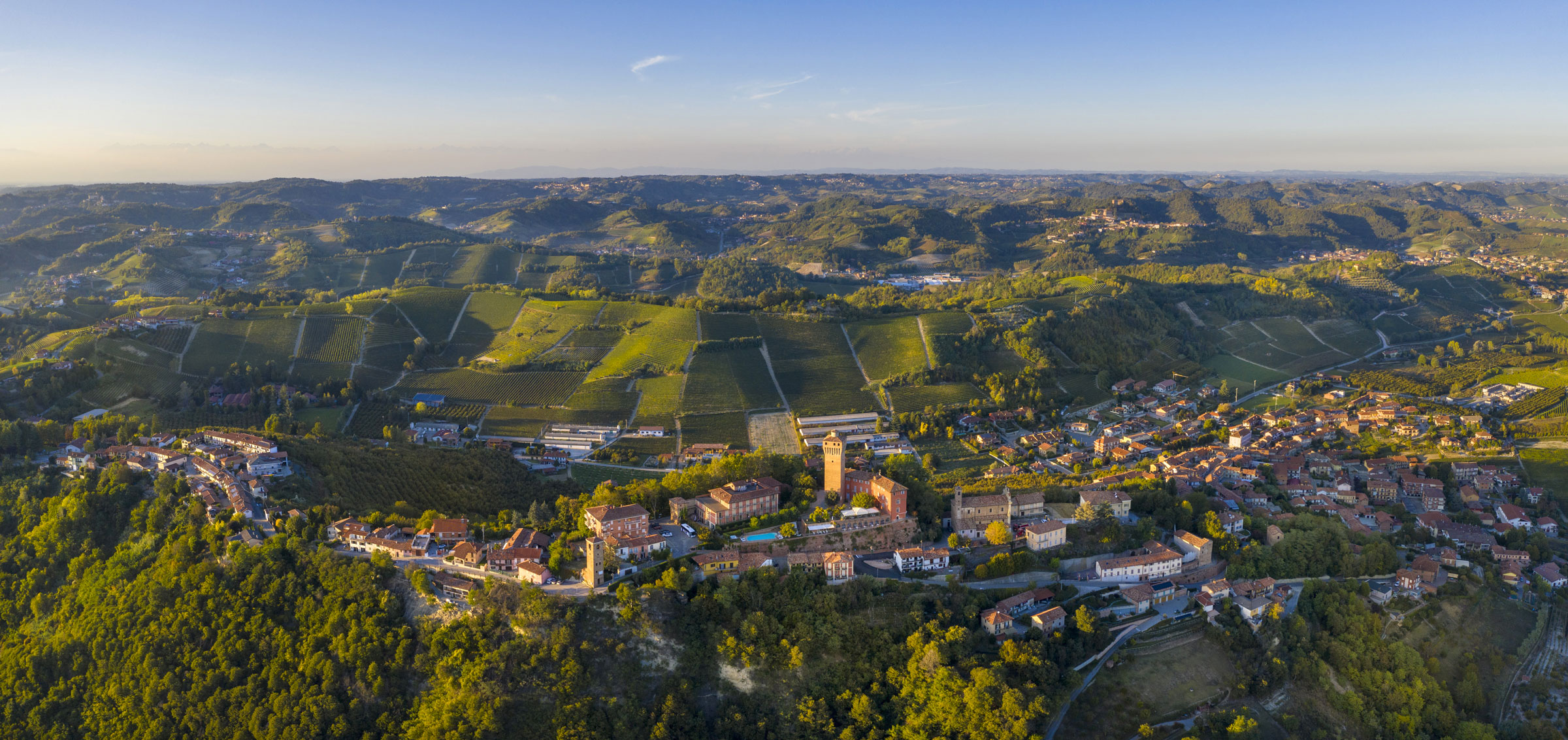Santa Vittoria d'Alba
You can clearly see the village on the unmistakable cliff that overlooks the Tanaro Valley, in the tract between Bra and Alba, to underline its belonging to the Roero territory, with a privileged view on the Langhe. The town is made up of different residential areas, starting with the Villa, historic settlement with precious monuments; a little more downstream there’s the ancient farming village called S. Antonio, while the important industrial and trading area of Cinzano is located at the foot of the hill. “Cinzano” is a name whose origins go back to the ancient wine house “Francesco Cinzano & C.” that had its historic factory in this exact spot until a few years ago.
HISTORIC BACKGROUND
S. Vittoria d’Alba has been an inhabited territory since the Neolithic period and it had a crucial importance during the roman period because of its proximity to Alba and to the ancient Pollentia (the current Pollenzo), to which it was connected thanks to the precious terracotta created in the village Anforianum. The name’s origin is uncertain: the most accredited version tells that the hill is dedicated to a roman “victoria”, toponym that would have then got the prefix “sancta” during the period in which the Christian community saw a huge development, such as when two churches existed here (the Beatae Victoriae in silva and the S. Victoriae in platea), both dedicated to the saint with Sabine origins. Around the year One Thousand it’s equipped with a “castrum”, contended between the municipality of Alba and Asti, but that stays under the House of the Visconti’s power after the fall of the Angevin domain. In 1433 the fief was assigned to the Romagnano, and three-hundred years later to Luigi Caissotti, the marquis of Verduno. After being claimed by the Sabaudian family, the fief became theirs in 1753 and assigned to the duke of the Chialbese, from whom the properties will then become part of the royal heritage.
MUST SEE:
THE TOWER AND THE CASTLE. The complex, fortified with rampants, occupies the top of the Santa Vittoria’s hill since 1154, even if the castle is a modern building. It’s private property now and it hosts a hotel complex. The squared-based tower, with an elegant element that protrude on the top, has a fifteenth-century style.
THE BELL TOWER. Dated between the end of the fourteenth century and the beginning of the fifteenth century, it certainly had the role of strategic control. It is 20 meters high, with a squared base and roman architectural characteristics.
THE CONFRATERNITY OF S. FRANCESCO. The building was born as a civil house, but later on it became the house of the Confraternity “sancti spiritus de sancta uitoria”. It contains the most precious and well-kept cycle of frescoes in the whole Roero territory: dated around the mid-1500s and from an unknown author, these frescoes show scenes of the Passion of Christ and they extend for 34 meters on the three side of the nave.
THE ROMAN TURRIGLIO. Built in the residential area of the Fraz. Cinzano, visible from the strada provinciale, the turriglio is a circular building with a squared base, located inside a boundary wall made of stone with “opus incentrum” texture. The monumental complex is dated around the first century BC, but the reason why it was built is still uncertain: some researchers identify it as a funerary temple consecrated to a not well specified Muse, but the most popular version considers it as a commemorative monument for the Roman victory won by Gaio Mario against the Cimbri and the Teutoni (101 BC), which marked the beginning of the Roman control over the area.





